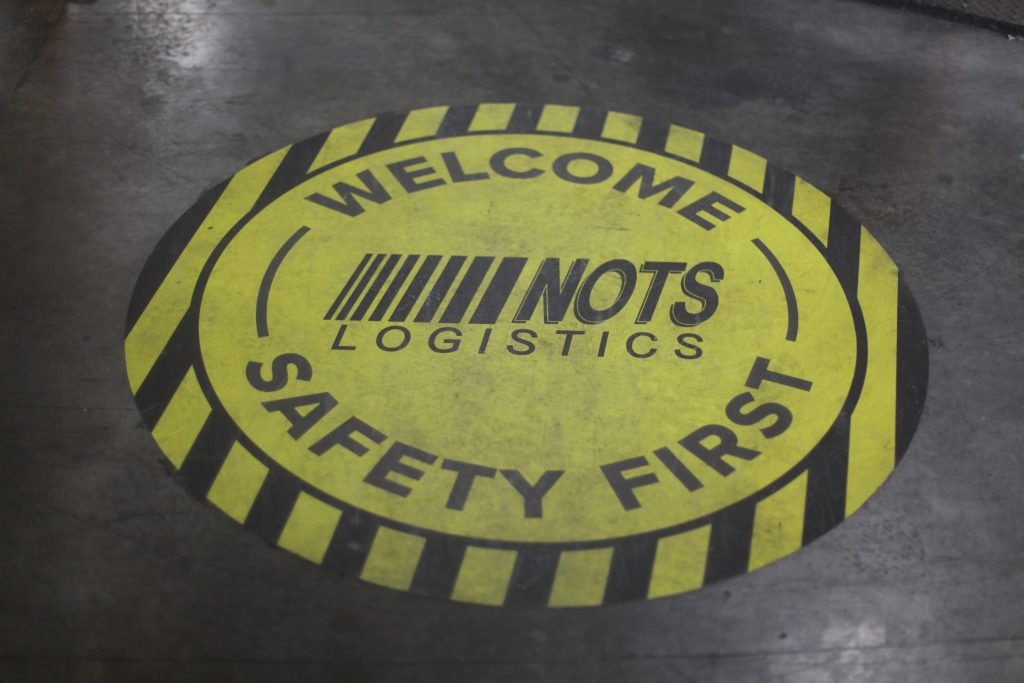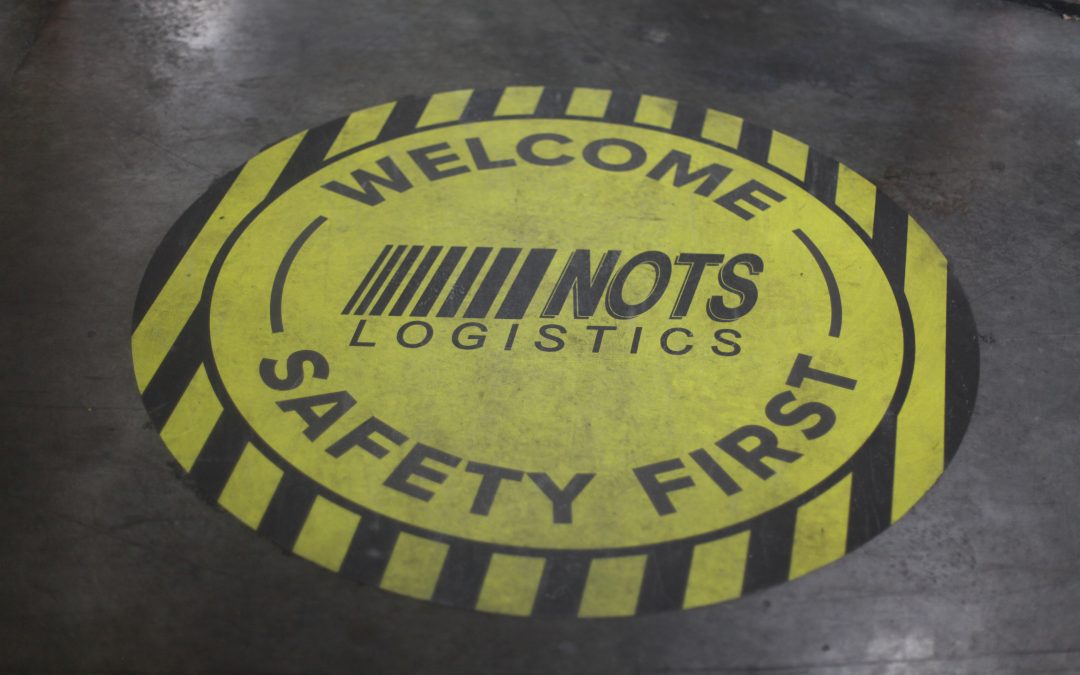best warehouse safety practices

In a warehouse setting, there are constant moving parts, which means workers are responsible for carrying out a variety of tasks. From operating forklifts and machinery to loading and unloading shipments from trucks, their work days can pose a variety of safety risks. This is why proper protocol is critical. At NOTS Logistics, safety is at the forefront of all our services. To ensure our warehouse employees feel safe on the job, we implement strict policies and procedures.
Safety attire is critical while employees are on the job. At NOTS Logistics, we provide Personal Protective Equipment (PPE) in each department of our facilities that it is required. PPE includes ear plugs for hearing protection, safety glasses, heat resistant and cut resistant gloves and face shields. In certain warehouse settings, team members should wear hard hats for protection. Closed toe shoes must be worn to protect employees’ feet from injury. These shoes not only provide protection, but also support for workers who are on their feet a majority of their work day. It is also important that workers wear clothing that is appropriate with the weather. For example, in the summer, they should wear lighter shirts and avoid dark colors. In the winter, they should wear extra layers, such as a jacket and gloves.
Safety equipment should be available and utilized. Forklifts should be used to lift heavy products. When an employee is operating a forklift, they must follow protocol. For example, when turning a corner, the driver should sound the horn to make fellow co-workers aware so they can clear the way. The emergency exits should be marked, and employees should know their locations. Sprinklers should be installed, as well as up to date fire extinguishers. At NOTS Logistics, we install defibrillator devices and first aid kits in all of our buildings.
Clear floors are essential to preventing slips and falls. The warehouse floor should be dry and free of cords and items that could cause a worker to trip and fall. The floor should be routinely cleaned and checked for cracks and/or pits. When a floor has been mopped, warn employees of the potentially wet floor with signage. Hazardous zones and/or materials should always be clearly marked. The best way to mark a hazardous zone in the warehouse is with signage and using tape to mark stripes on the floor of the area.
The most critical step in warehouse safety is proper training. Both day and night shift workers need to be educated on the best safety practices. For example, host a training seminar on proper lifting techniques. You could have all forklift operators take a refresher course on how to operate the equipment in the safest way. Host a CPR certification training course for all employees, not just management. Hang signs throughout the workplace reinforcing safety tips and guidelines. Ensure your management team is up to speed on how to best promote and enforce these practices, as they set the tone and serve as examples for their teammates. When an employee is failing to follow the rules, reprimand him or her. And when an employee is exemplifying best practices, reward him or her. You could also implement a safety reward program where your staff is rewarded when they go a certain amount of time with zero workplace injuries.
At NOTS Logistics, we believe safe co-workers are happy co-workers. We pride ourselves on our safe, clean and organized warehouses, and our employees appreciate being able to work in a safe environment. It is important that warehouse safety is never overlooked and that no corners are cut. Our management team is experienced in best safety practices and can bring them to your warehouse. Contact us today to learn more.
Connect With Us
Main Office
17848 Mockingbird Road
Nashville, IL 62263
Email:
sales@notslogistics.com
Phone: (800) 642-5436
Fax: (618) 478-5356

